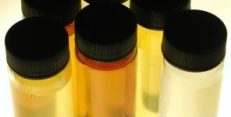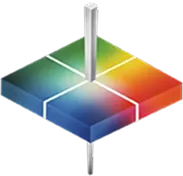
“True Color”, “Apparent Color”, “Adams-Nickerson”, “Biodegradable Colour” are all the same name for what we call ADMI Color (American Dye Manufacturer’s Institute).
This metric is used to quantify the residual color of waste water due to the presence of colored minerals and dyes, humic breakdown substances and iron.
The ADMI (American Dye Manufacturers’ Institute) Color Index was developed to monitor the color of wastewater effluent as an indicator of water quality. ADMI is a single metric based on the Adams Nickerson (ANLab) color difference between water and the visual Pt-Co liquid color standards that is independent of hue.
“It has been estimated that annually up to 12% of the synthetic dyes used in textile manufacturing operations can be found in dye wastewater effluent. After being processed in treatment plants, 20% of those dye losses will enter the environment. The same mechanism that allows these colorants to bind so well with textile fibers also causes hydrolysis reactions with other wastewater components, or reduction in anaerobic sediments to produce obnoxious by-products.
As a result the dispersed dyes tend to remain resident in the environment for some time. The half-life of these dyes depends on the pH, temperature and surrounding medium (natural water or anaerobic sediment). The dominant hue of these colored effluents tends to be blue[1].”
The Adams Nickerson Chromatic Value formula was an attempt to transform CIE tristimulus color space into a visually uniform color space through the use of a single metric color difference value. It is based on the premise that if two colors of different hues, A and B, are perceived to be visually different to the same degree from a colorless water reference point, then the vector distance (originally calculated as a ANLab delta E) from the colorless point to A or B will be the same in the Adams Nickerson color difference space.
In the case of the ADMI scale, the APHA/Pt-Co liquid color standards[2] serve as a set of physical reference standards against which the dye effluent is rated using a total color difference correlation. For example, if a blue dye effluent is visually perceived to differ from distilled water to the same magnitude as a light yellow APHA/Pt-Co 100 standard solution from the same colorless water standard, then the blue effluent is assigned an ADMI rating of 100.
HunterLab has replaced this subjective visual judgment as to which APHA/Pt-Co standard solution the bluish effluent sample matches with an objective, colorimetric method using a dE* total color difference correlation to the APHA/Pt-Co liquid color standards. This correlation to assigns equivalent ADMI values to samples of textile wastewater effluent.
Prior to measurement, the bluish effluent sample is filtered or centrifuged to remove suspended colloidal particles until judged to be visually clear. The samples are brought to room temperature. As the color varies with pH, the pH is adjusted to 7.6 using H2SO4 or NaOH as necessary.

